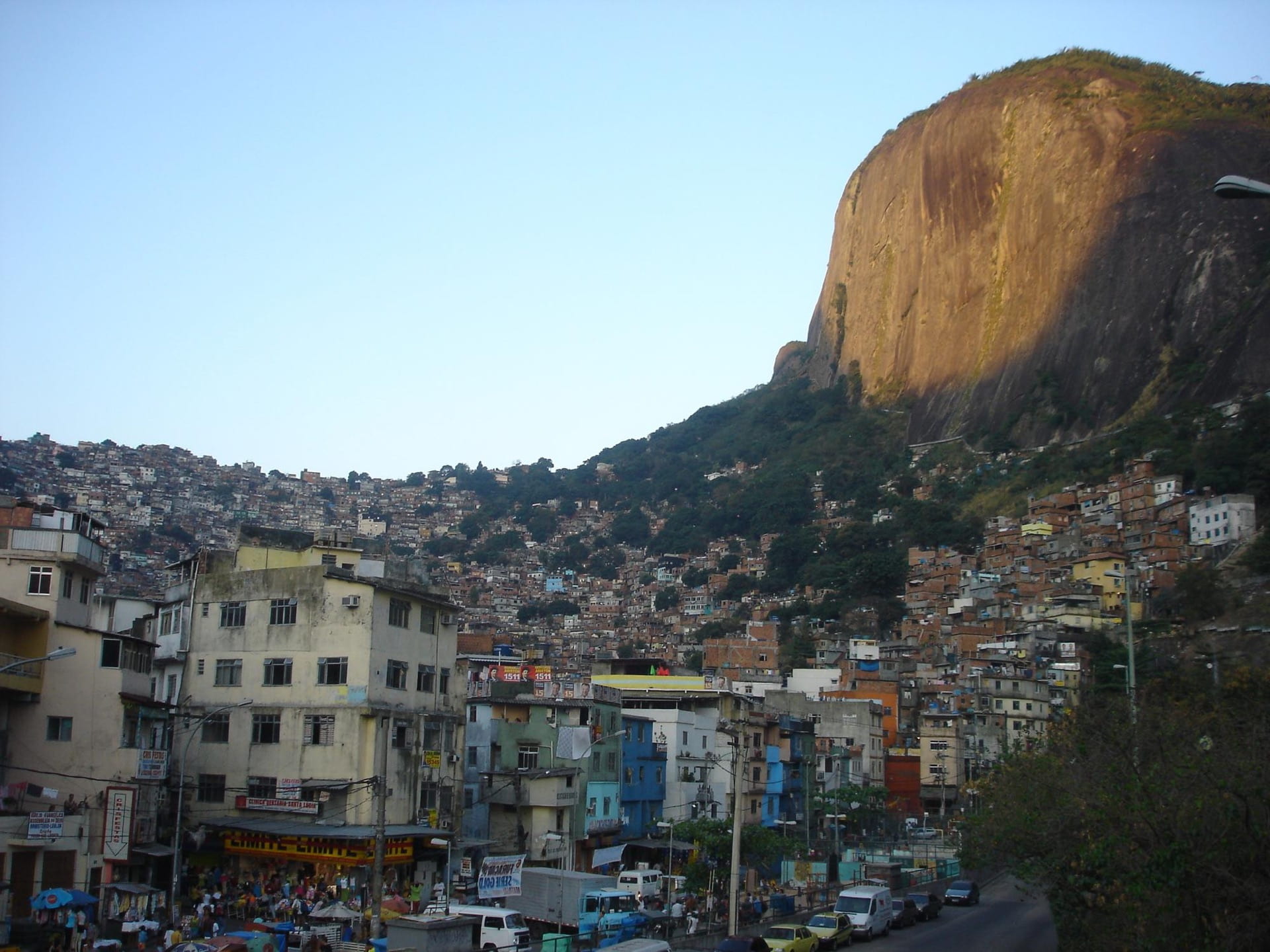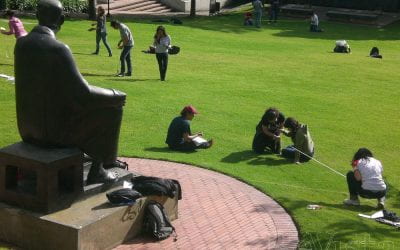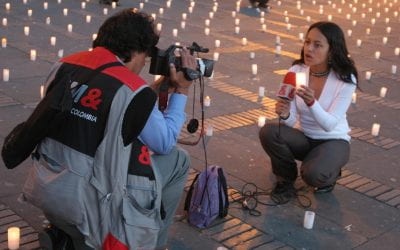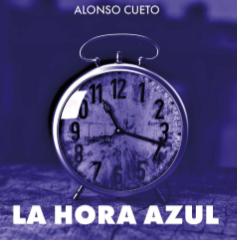Violence and Violence Prevention in Rio de Janeiro’s Favelas
In Rio de Janeiro’s Rocinha favela (shantytown), fireworks celebrate a victory for a beloved soccer team or warn of imminent urban-guerrilla style police operations and tiroteios (gunshots). Three years ago, amidst reports and rumors of a brewing drug war, I feared the fireworks I heard. Nonetheless, I had an English class to teach and my students were waiting. Moments later, I hid under a cash register with a local store owner as machine gunfire erupted in a nearby plaza. In the aftermath, I saw buildings riddled with bullet holes and 10 traficantes (drug dealers) carrying AK-47’s and speaking frantically on two-way radios. I slipped by in the confusion and taught at the Escola Moranguinhos kindergarten school, where adults sat on toddler chairs and we studied the verb “to be.”
In the mornings, I taught at a school in the wealthy Gávea neighborhood that charges almost twice the monthly minimum wage for its language courses. That morning, I had begun with an excerpt from Oliver Sacks, which led into a vocabulary exercise on verbs of perception. Then, we headed down to the state-of-the-art computer lab to finish some grammar exercises.
Although the theme of rampant urban violence in Brazil is common in international media, such reports rarely catch the subtleties that define the spatial, cultural, and political complexities present in Rio de Janeiro’s daily routine. These two experiences reflect, however, what often seems like Rio’s two parallel worlds—worlds, in my case, separated only by the Zuzu Angel Tunnel, a place where the “first” and “third” worlds collide.
Nonetheless, I became convinced that these worlds can intersect when I returned to Rio this summer on a DRCLAS-funded internship at the Center for Health Promotion (CEDAPS). By meeting with local leaders representing 120 favelas in Rio de Janeiro state, CEDAPS harnesses the creativity and experience of favela leaders to help them articulate challenges and solutions to their communities’ problems. With their input, CEDAPS reaches out to federal universities, other NGOs, and businesses to cement partnerships that can begin to resolve these communities’ problems. At one meeting, I learned about—and became involved in—a social responsibility initiative that would partner CEDAPS with the Johnson & Johnson Company to generate employment and income in Rio’s favelas. Community leaders will identify local salespeople to sell Johnson & Johnson products and distribute magazines about public health issues, while Johnson & Johnson promises to reinvest a percentage of its profits in local community associations to make other projects feasible.
Throughout my summer at CEDAPS, newspaper headlines were dominated by stories of Rio’s successes and failures as host of the Pan-American Games. The newspapers chronicled gruesome stories of a “mega-operation” involving 1,350 security personnel drawn from local, state, and federal government to subdue the drug trade in the Complexo do Alemão (German Complex). In the midst of the operation, however, a prominent Brazilian NGO, Afro-Reggae, sponsored a party to inaugurate its new headquarters. Indeed, many famous musicians and comedians performed in the celebration that took place in the Grota favela that forms part of the Complex. During the show, CEDAPS distributed condoms and held a Q&A session on how to prevent sexually transmitted diseases. CEDAPS also trained local youths from the Complex (some of whom are teenage parents themselves) to educate their peers. During this event, the Grota favela did not in anyway resemble the war zone that I had read about. When I left, however, the sight of heavily armed military personnel in fatigues guarding the entrance reminded me of the parallel worlds I had experienced as a teacher.
CEDAPS defines health broadly to include employment, quality health clinics and schools, affordable public transportation, safe housing conditions, and access to cultural and athletic spaces. CEDAPS recognizes these sectors as necessities that all affect health. It operates on the theory that violence can be prevented only when people have hope and a sense of self-agency. Today, in 2007, Rio de Janeiro is in a period of transition, of progress and setbacks. Civil society has never been more active, but it still requires a competent and willing government to become a true partner in the struggle against violence.
Winter 2008, Volume VII, Number 2
Nick Zimmerman is a second-year public policy student at Harvard’s Kennedy School of Government. He lived in Rio de Janeiro for close to three years after college, studying Portuguese at the Federal University and serving as a coordinator for an educational NGO in the Rocinha favela.
Related Articles
Maintaining Academic Excellence in Latin American Universities
The Iniciativa para el Desarrollo de la Innovación Académica (IDIA), a teaching and learning initiative of LASPAU, helps higher education institutions in Latin America address the perennial…
Sobre Envíos Epistolares y Violencias
A través del proyecto “Cartas de la Persistencia”, liderado por la Biblioteca Luis Angel Arango del Banco de la República, la Secretaría Distrital de Cultura y Turismo de Bogotá y el Instituto Pensar…
Novelas
La hora azul de Alonso Cueto es la historia de Adrián Ormache, un destacado abogado limeño que, luego de la muerte de su madre, comienza a descubrir una pasado familiar ciertamente…





